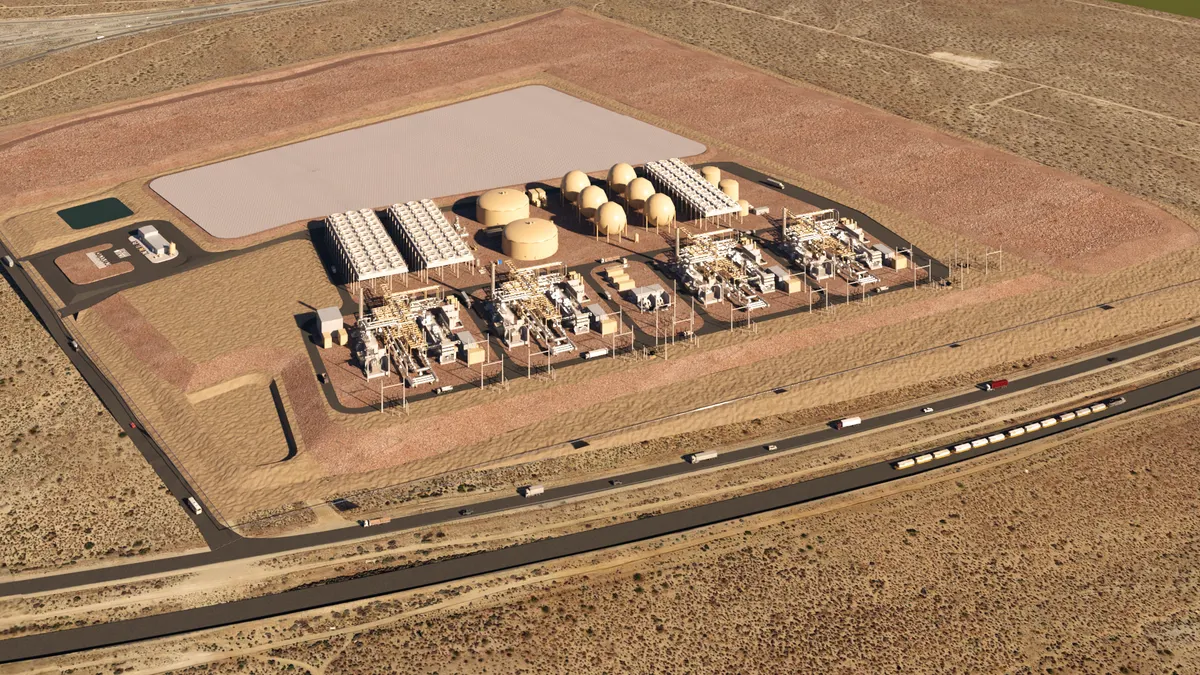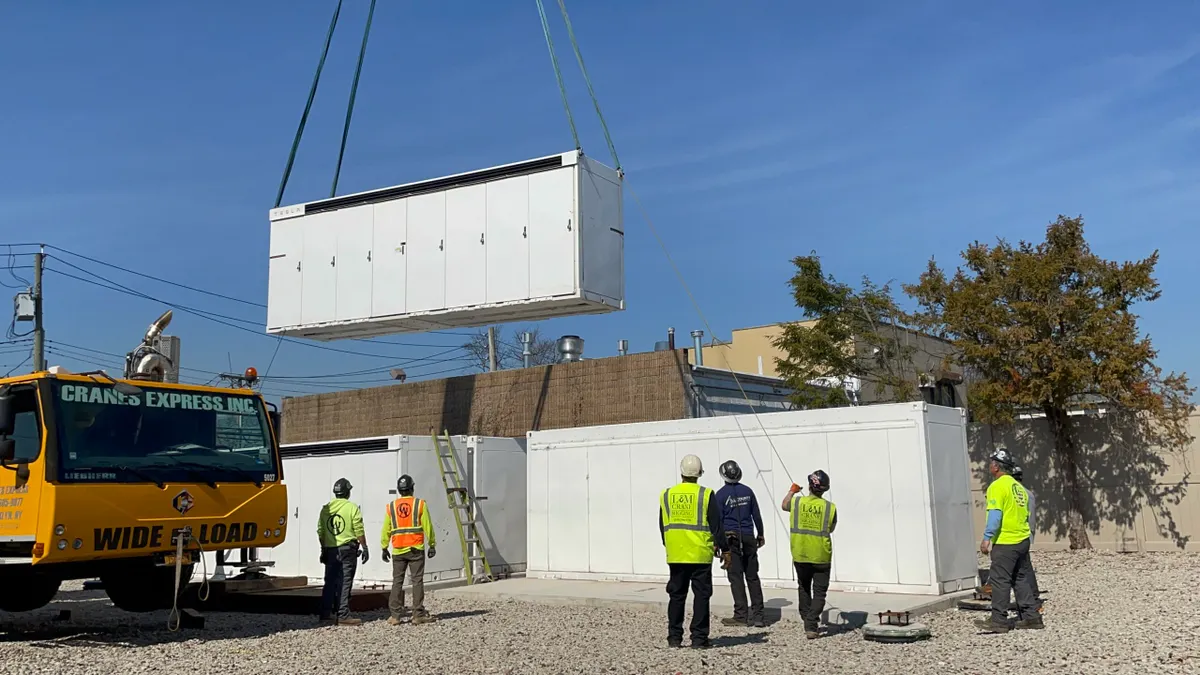The growth of the global energy storage market is creating one headline after another, as analysis after analysis predicts new heights of investments and deployments. Coupled with falling technology costs, particularly for lithium-ion batteries, energy storage is expected to play a key part in the global transition toward a more sustainable and reliable power grid.
"Nothing really does seem to be standing in the way of its explosive growth," Ricardo Rodriguez, research analyst for distributed energy storage at Navigant Research, told Utility Dive.
"[T]he biggest driver of growth going forward — outside of cost — is likely to be the development of new market opportunities and value streams that are opened up by favorable federal and state regulations."

Ricardo Rodriguez
Research analyst, Navigant Research
The market research company in its latest report identified close to 2,100 energy storage projects globally. And international storage markets are anticipated to grow exponentially over the next decade, a second report from Rethink Technology Research found.
"There are really five primary drivers for storage today," Rodriguez said. "They are changing rate structures, [electric vehicle] charging integration, solar PV integration, resiliency/backup power, and to some degree, business model innovation. But I think the biggest driver of growth going forward — outside of cost — is likely to be the development of new market opportunities and value streams that are opened up by favorable federal and state regulations."
Market opportunities for storage
The Massachusetts Department of Public Utilities issued a recent order to allow utility companies to pay commercial property owners if they agree to rely upon their energy storage systems during peak events. The order was a landmark state regulation in the energy storage space, according to Rodriguez.
"I think it was one of the first orders in the nation to incentivize behind the meter battery storage," he said.
The Navigant report also highlighted the Federal Energy Regulatory Commission's (FERC) Order 841 and the United Kingdom's ancillary services markets for creating new value streams for energy storage.
FERC Order 841, which was issued in February 2018, directs independent system operators and regional transmission organizations to establish rules and regulations to open up their wholesale energy, capacity and ancillary services markets to energy storage resources.
Aside from a favorable regulatory structure, utility companies around the country are increasingly betting on renewable energy coupled with energy storage, rather than building new natural gas plants, Rodriguez said. "What we saw in 1Q and 2Q was that a key driver for both utility-scale and distributed-scale storage was traditional generation replacement," he said.
One such utility is Florida Power and Light Co. (FPL), which in March announced what it says is the world's largest solar-powered battery storage system — a 409 MW/900 MWh facility set to begin operations in 2021. "The intention behind that project was to accelerate the retirement of two 1970s-era natural gas units that FPL relies heavily upon," Rodriguez said.
That idea is consistent with a July National Renewable Energy Laboratory (NREL) study, which concluded that every region across the U.S. offers the potential for peaking capacity needs to be met by short-duration, four-hour battery storage systems.
"One of the largest takeaways I had after concluding my report was that identifying the most economical projects and the highest potential customers for storage has really become a priority for a diverse set of companies, including power providers, grid operators, battery manufacturers and research integrators," Rodriguez said. "Because of that, we're starting to see much more purposeful installations."
The international landscape
North America, the Asia Pacific and Western Europe were the leading regions for deployed energy storage power capacity during the second quarter of 2019, Navigant found, with lithium-ion batteries remaining the fastest growing storage technology.
"The majority of investment today is in battery storage, and part of that is because lithium-ion batteries are the energy source of choice for new projects because of their falling prices," Rodriguez said. "Also, because of the shorter development timeline, relative to other energy storage technologies and flexible operating parameters."
A second report published last week by Rethink concluded that global energy storage will grow from 6 GWh installed today to 635 GWh by 2030.
Annual energy storage additions will jump from 6 GWh this year to 101 GWh by 2030, according to Rethink's report. The U.K.-based market research company predicts that the Asia Pacific region, led by China, will dominate dominate installations with 273 GWh, or some 43% of the total expected capacity, while Europe and the U.S. will account for about 31% of cumulative capacity.
Rethink Technology Research believes that lithium-ion batteries will remain the predominant storage technology over the next decade, spurred by the anticipated growth of the EV market.
"The top 10 [battery] manufacturers alone have planned some 510 GWh of annual global factory capacity by 2030, with 45% of global lithium-ion manufacturing capacity located in China, Europe and South Korea," the company said in a statement.
Unlike other analyses, Rethink Technology expects a weaker U.S. market, unless lawmakers will extend the investment tax credit (ITC) to include storage technologies. The ITC is set to expire at the end of 2021 for residential systems, while a permanent 10% credit will remain in place for commercial systems. Currently, storage systems can qualify for the credit if paired with solar.
"[S]ignposts such as the record residential storage quarter, massive FTM pipeline growth, and innovative policies such as the Massachusetts clean peak standard point towards an industry that is maturing and should stabilize at scale over the next two years."

Dan Finn-Foley
Head of energy storage, Wood Mackenzie Power & Renewables
Rising customer interest and incentives in more states contributed to a 41% quarter-over-quarter increase in the U.S. residential storage market during the second quarter of 2019, the latest U.S. Energy Storage Monitor from Wood Mackenzie Power & Renewables and the U.S. Energy Storage Association found.
While the residential storage sector set a new record in Q2 with the deployment of 35 MW, analysts lowered the overall U.S. energy storage outlook for all of 2019. Wood Mackenzie said that weaker-than-expected mid-year numbers in some behind-the-meter markets and front-of-the-meter (FTM) project delays caused the outlook to fall to 478 MW, an increase of 54% over the 311 MW deployed in 2018.
"The nascent energy storage market in the U.S. continues to grow in fits and starts," Dan Finn-Foley, head of energy storage for Wood Mackenzie Power & Renewables, said in a statement. "But signposts such as the record residential storage quarter, massive FTM pipeline growth, and innovative policies such as the Massachusetts clean peak standard point towards an industry that is maturing and should stabilize at scale over the next two years."





















